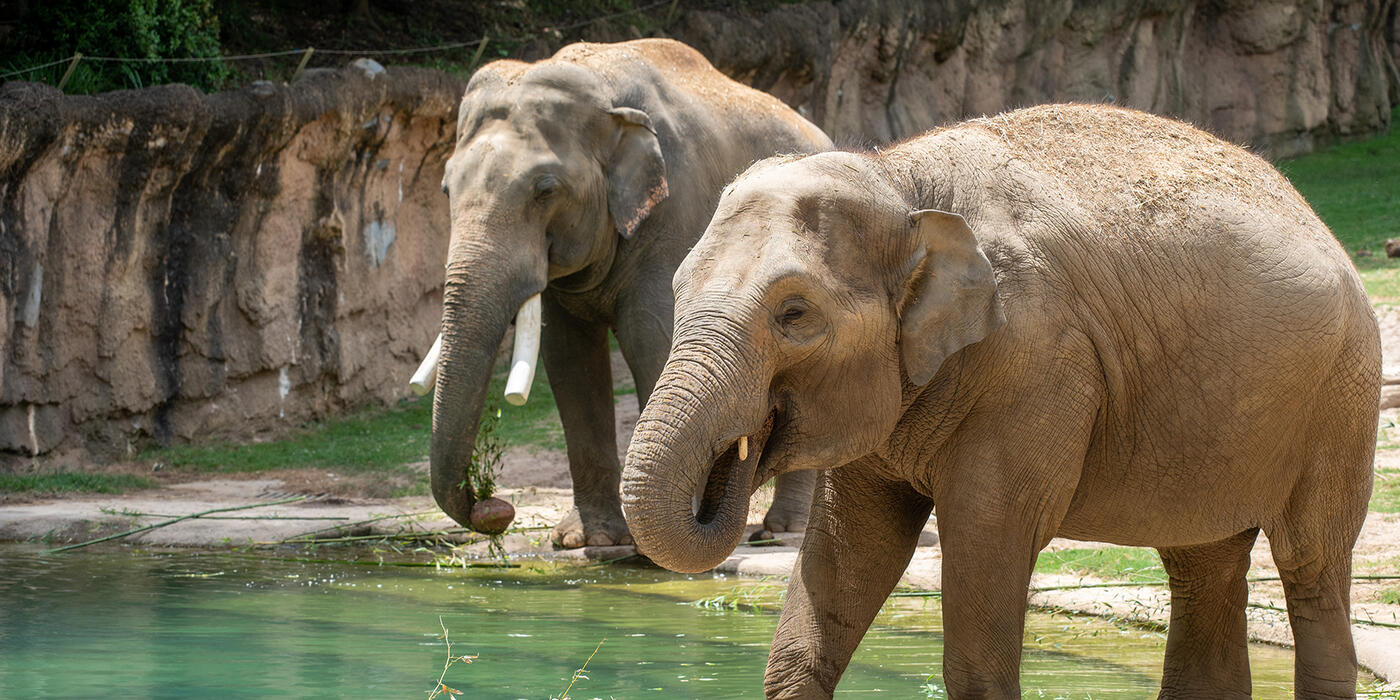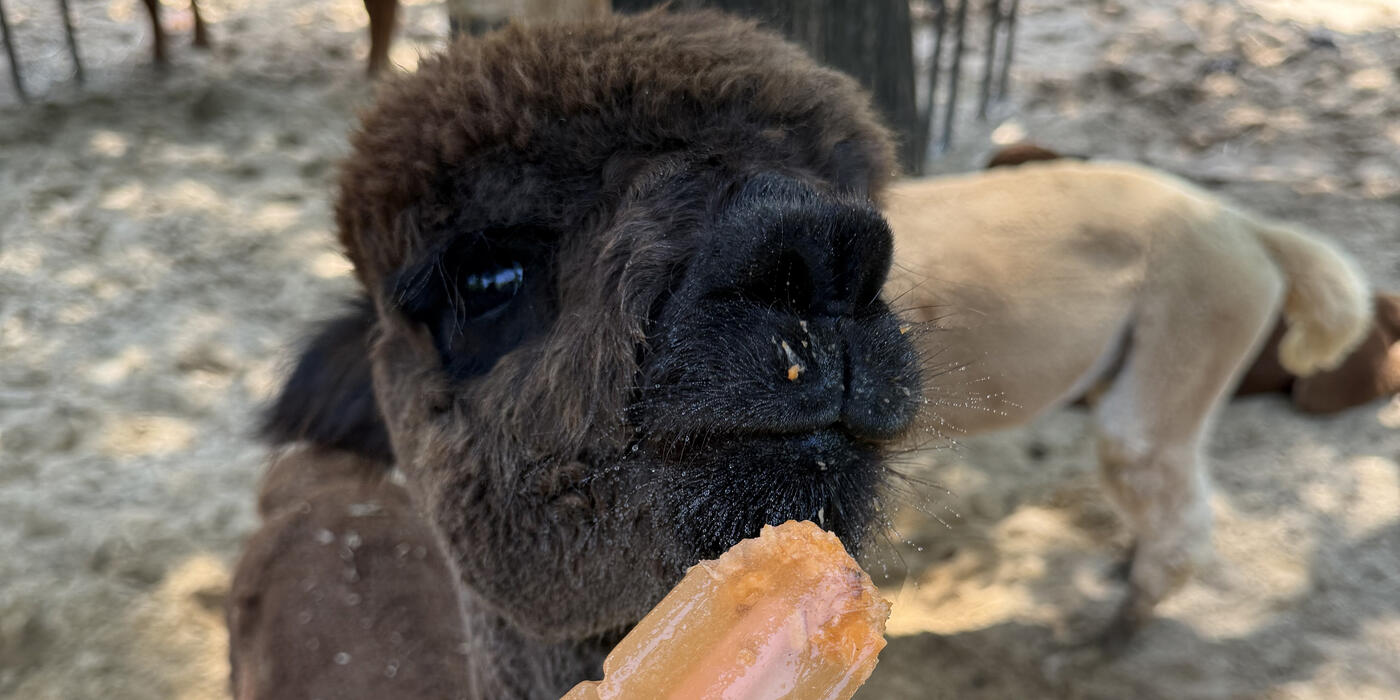How Do You Weigh Animals at the Zoo?
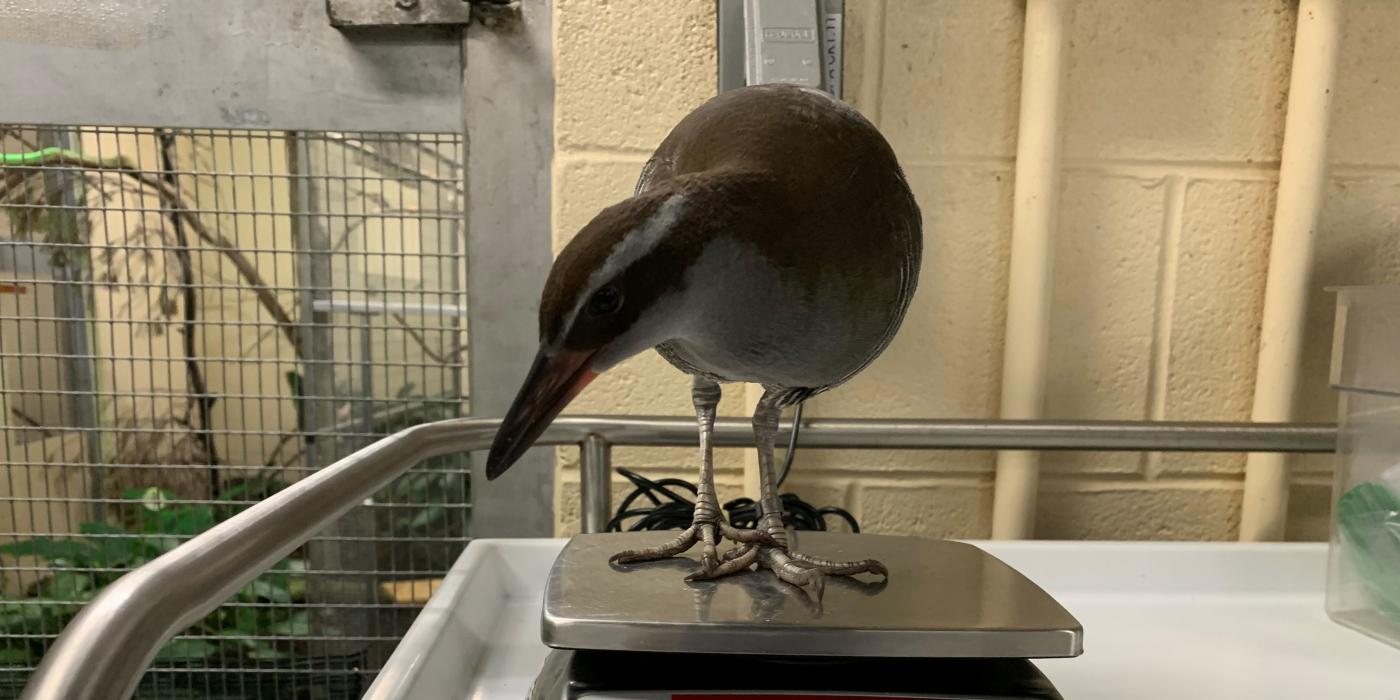
How do you get an elephant to exercise, safely introduce two songbirds or prepare a cheetah for a veterinary exam? In this series, get an insider’s look at how animal keepers use activities, food, training and toys to care for the Smithsonian’s National Zoo’s animals. Find out how enrichment stimulates the senses, why training builds trust, and how keepers come up with new ways for animals to explore and use their natural behaviors each day.
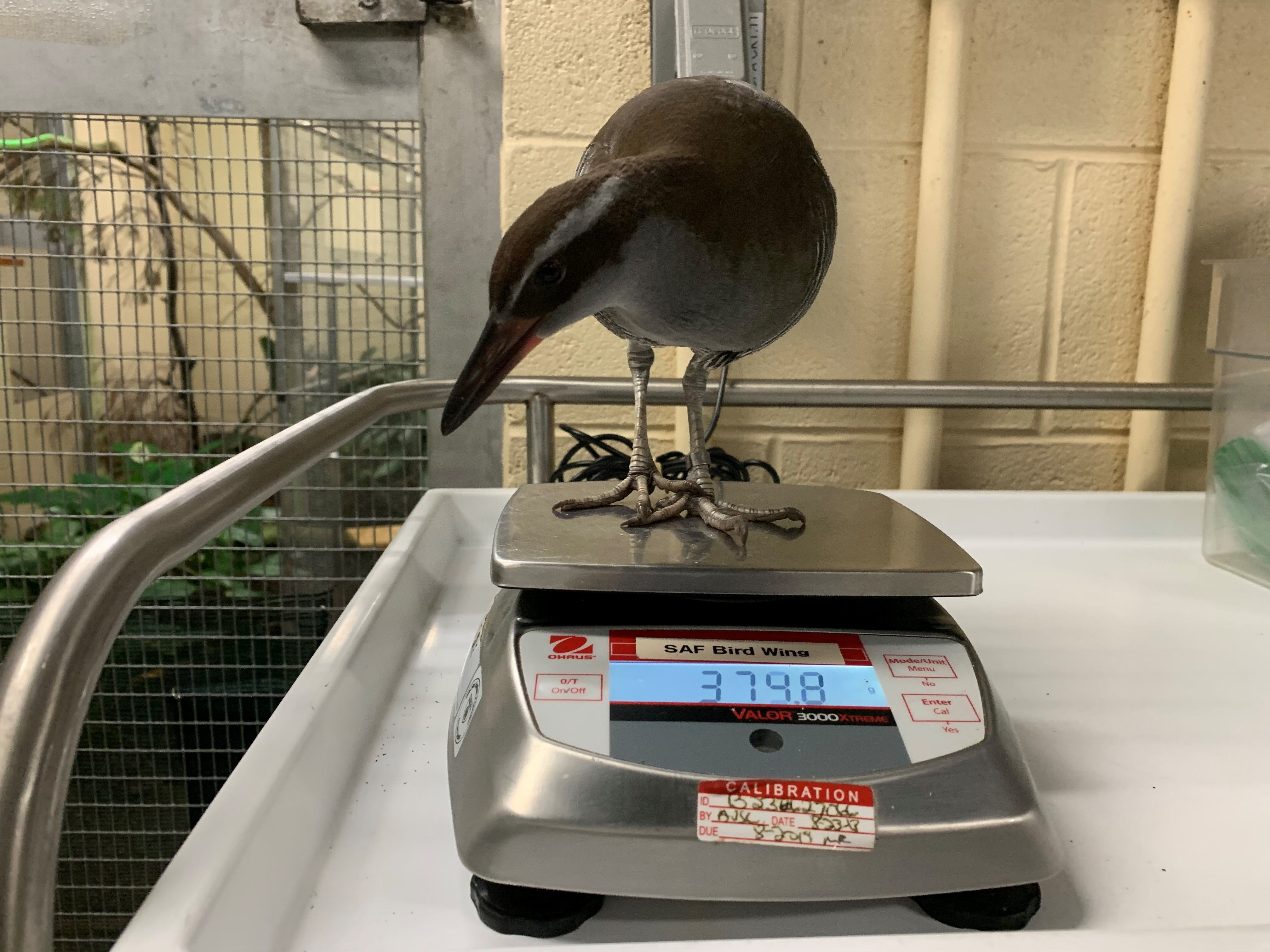
Keepers can learn a lot about an animal’s needs just by monitoring its weight. A heavy armadillo may need enrichment (like a puzzle feeder) that encourages it to move around. Weight loss in a monkey could mean that there is too much competition for food, and it needs to be hand-fed away from the other monkeys in its exhibit. But how do you weigh a wiggly ferret or get a full-grown elephant onto a scale? In this update, keepers share the unique skills and setups they use to weigh animals across the Smithsonian’s National Zoo and Conservation Biology Institute.
The Heavyweights
The Zoo is home to five Asian elephants, but 10-foot-tall, 40-year-old male Spike is the largest. In fact, he’s the largest animal at the Zoo! So, how do keepers weigh an animal that big? “We ask him to stand on a scale (politely) and reward him with his favorite food,” says keeper Debbie Flinkman.
It takes a unique scale to withstand the weight of a full-grown elephant. In this case, a 10-foot long, 5-foot-wide scale made of steel plates and girders. The scale is built into the base of a protective elephant chute, which keepers have trained the elephants to enter. “Swing open a couple 10-foot-tall gates and a few several-ton hydraulic doors, and we can safely weigh any of our five elephants to manage their health and welfare,” says Flinkman, adding that sometimes Spike prefers to back onto the scale instead of going in head first.
Training can be especially useful for large animals that can’t be picked up and placed on a scale. At Kids’ Farm, keepers helped 3-year-old Holstein cow Maggie get comfortable wearing a halter and walking on a lead rope for weekly weigh-ins. They also trained her to back up when asked, which helps ensure all her hooves get placed correctly on the scale.
“At just shy of 2,000 pounds, Maggie is a very large cow! Being able to safely work with her while keeping her calm is key to making the process of weighing her go smoothly,” says keeper Nikki Maticic.
Giant pandas may not measure up to elephants and Holstein cows, but they still weigh hundreds of pounds. The giant panda family is trained to enter a chute where their scale is located. “Weekly weights are easy to get, since the pandas travel frequently through this training area,” says assistant curator of giant pandas Laurie Thompson. Their reward for holding still while keepers write down their weight? Honey water — a favorite treat! At 9 months old, Xiao Qi Ji had already mastered stepping onto the scale and has been participating in regular weigh-ins ever since.
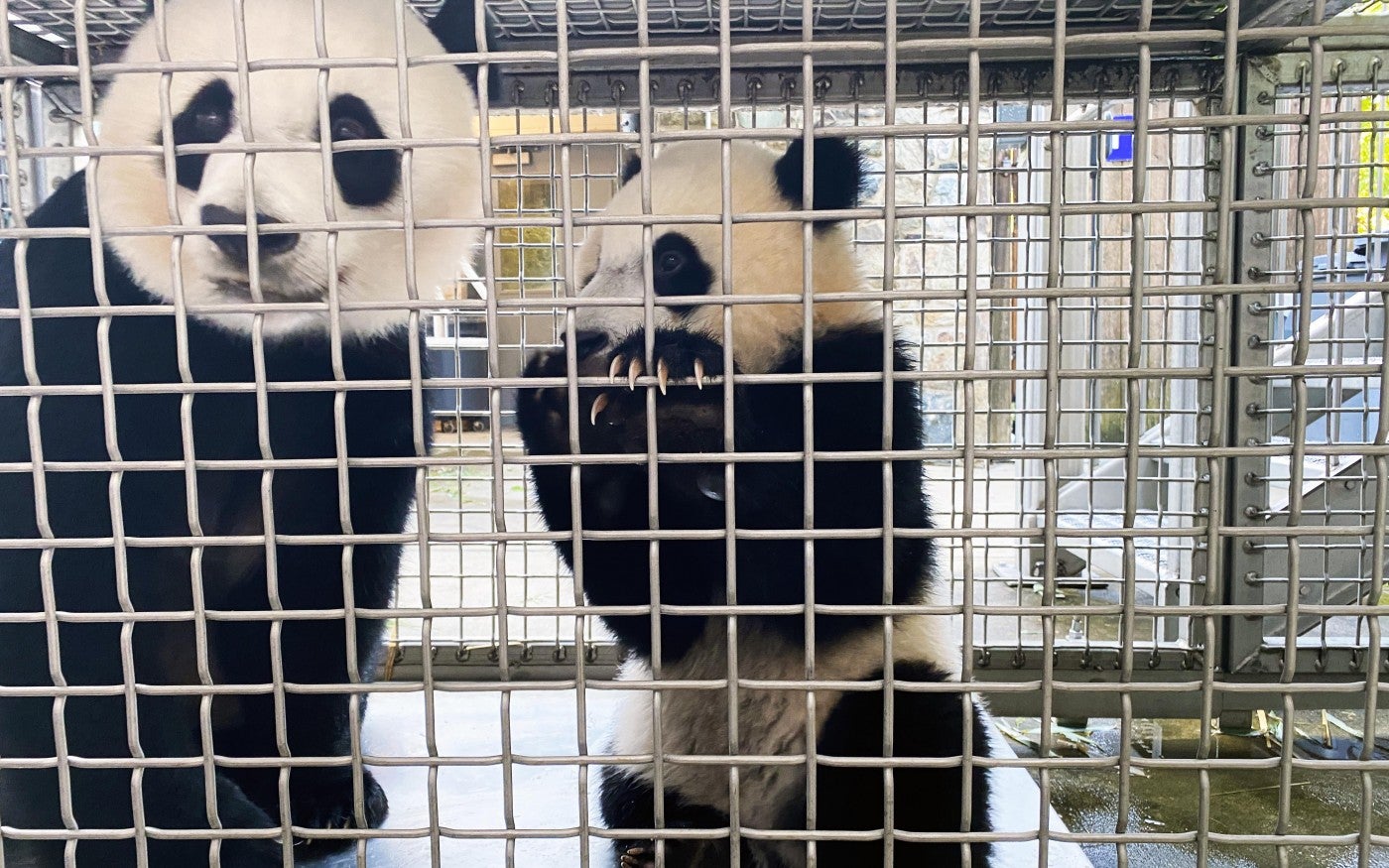
The High Flyers
Bird keepers have to get creative to weigh everything from tiny hummingbirds to big kori bustards. Small Mammal House keepers taught their pair of Von der Decken hornbills that a scale is not scary. “Hornbills are naturally skittish around unfamiliar objects, so we lure them onto the scale with live worms,” says keeper Ann Gutowski. A log placed on the scale provides a rough surface for the birds to land on. While the birds search for worms, keepers record their weights.
A small bowl of peas, corn and seed can attract barred parakeets – but when five birds share an exhibit, the scale can get crowded. “To get an accurate weight on each individual without some hogging the food bowl, I’m training these birds to ‘target’ onto the scale one at a time,” says keeper Shelby Burns. The parakeets are learning to follow a target pole — a wooden dowel with one end painted green — to the scale. Some parakeets catch on more quickly than others, so training sessions are tailored to each bird in the flock.
Weighing songbirds regularly is important, because their weights can quickly change. “Their fat stores and weights fluctuate a lot around the breeding season and spring and fall migration,” explains Burns. Some songbirds are difficult to weigh or leery of new things. Keepers have come up with clever solutions, like camouflaging a scale or setting up a camera so they can record weights without needing to be nearby.
Keepers also set up scales with a bird’s natural abilities in mind. A hummingbird, for example, can hover above a scale without ever touching it. A strategically placed perch on a sugar water feeder keeps a hummingbird perched and still long enough to get its weight. Take a look:
At the Smithsonian Conservation Biology Institute, Guam rail Tasi is easy to weigh. “In fact, he weighs himself,” says keeper Erica Royer. Tasi is an ambassador bird for his critically endangered species and spends a lot of time interacting with people. “Since Tasi was hand-reared by our keeper staff, it was easy to train him to step onto a scale,” Royer explains. The Zoo’s big, terrestrial birds — like kori bustards and curassows — use large scales that can feel slippery on their feet. To help, keepers place hay on top and use beetle larvae as bait.
“It may take months or years for birds to feel comfortable stepping on the scale, so it requires practice and patience to get that voluntary weight,” says Burns. Over time, keepers have collected plenty of data about bird weights, which helps the nutrition team prescribe the best diets.
The Small and Spry
A black-footed ferret’s long body and wiggly nature makes it difficult to weigh. The ferrets at the Smithsonian Conservation Biology Institute are also possible candidates for reintroduction to the wild. “They need to maintain their natural fear of humans, so we can’t spend a lot of time interacting with them or training them to step onto a scale” explains keeper Vicki Lake. A long, wire basket is the perfect solution for keepers to quickly and safely weigh the ferrets.
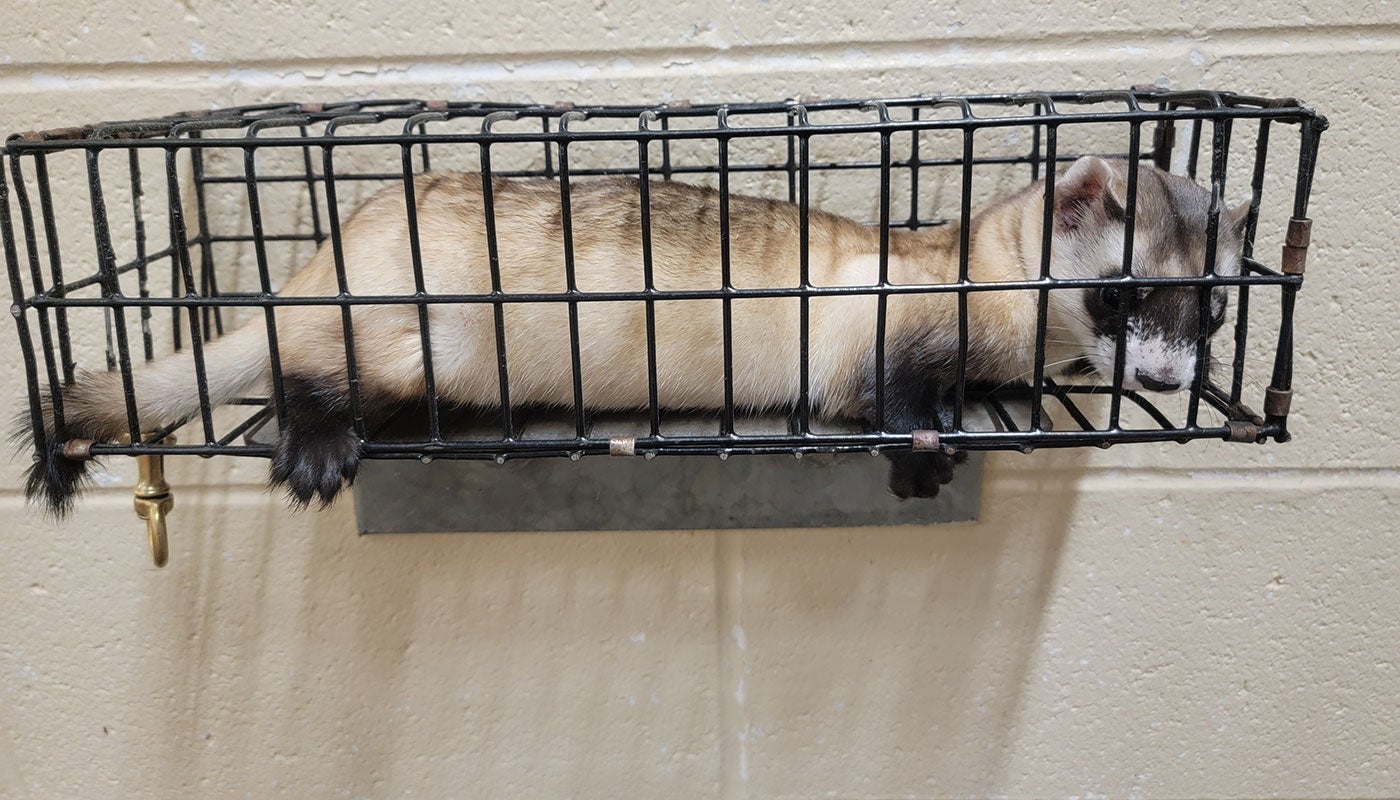
In Amazonia, guinea pigs step into a plastic bin where they are rewarded with their favorite snack: lettuce. Keepers use the bin to move the small rodents to a nearby scale, where they are picked up and placed on the scale to be weighed individually. “Just because I’m bigger than guinea pigs and can pick them up out of their exhibit, doesn’t mean I should,” says keeper Christina Castiglione. The bins create a familiar, safe experience for the guinea pigs, so any keeper can successfully weigh them.
The lemurs at the Lemur Island exhibit are weighed once a month and will voluntarily step onto their scale. “But black-and-white ruffed lemurs have very long, fluffy tails that often hang off the edge of the scale, causing the weight readouts to fluctuate,” says keeper Val Schultz. To get more accurate weights, keepers trained the lemurs to hold up their tails. After success with the black-and-white ruffed lemurs, they have started to train the ring-tailed lemurs too.
Weigh-ins can help keepers understand if an animal is feeling OK or has access to too little or too much food. Each animal has a diet designed specifically for their needs so, to keep things balanced, the reward for stepping on the scale often comes directly from their favored items in that diet. Zoo nutritionists can pair weights with visual or hands-on exams to monitor body condition, and to make sure animals are developing normally or maintaining the proper amount of weight. And if an animal needs medicine, veterinarians use weight to calculate the correct dosage.
With their knowledge of an animal’s natural history, personality and food preferences, keepers have developed many creative ways to weigh different animals. They can gain a wealth of information from the simple number on a scale, and use it to help provide the best care for all the animals at the Smithsonian’s National Zoo and Conservation Biology Institute.
This article appears in the November 2021 issue of National Zoo News.
